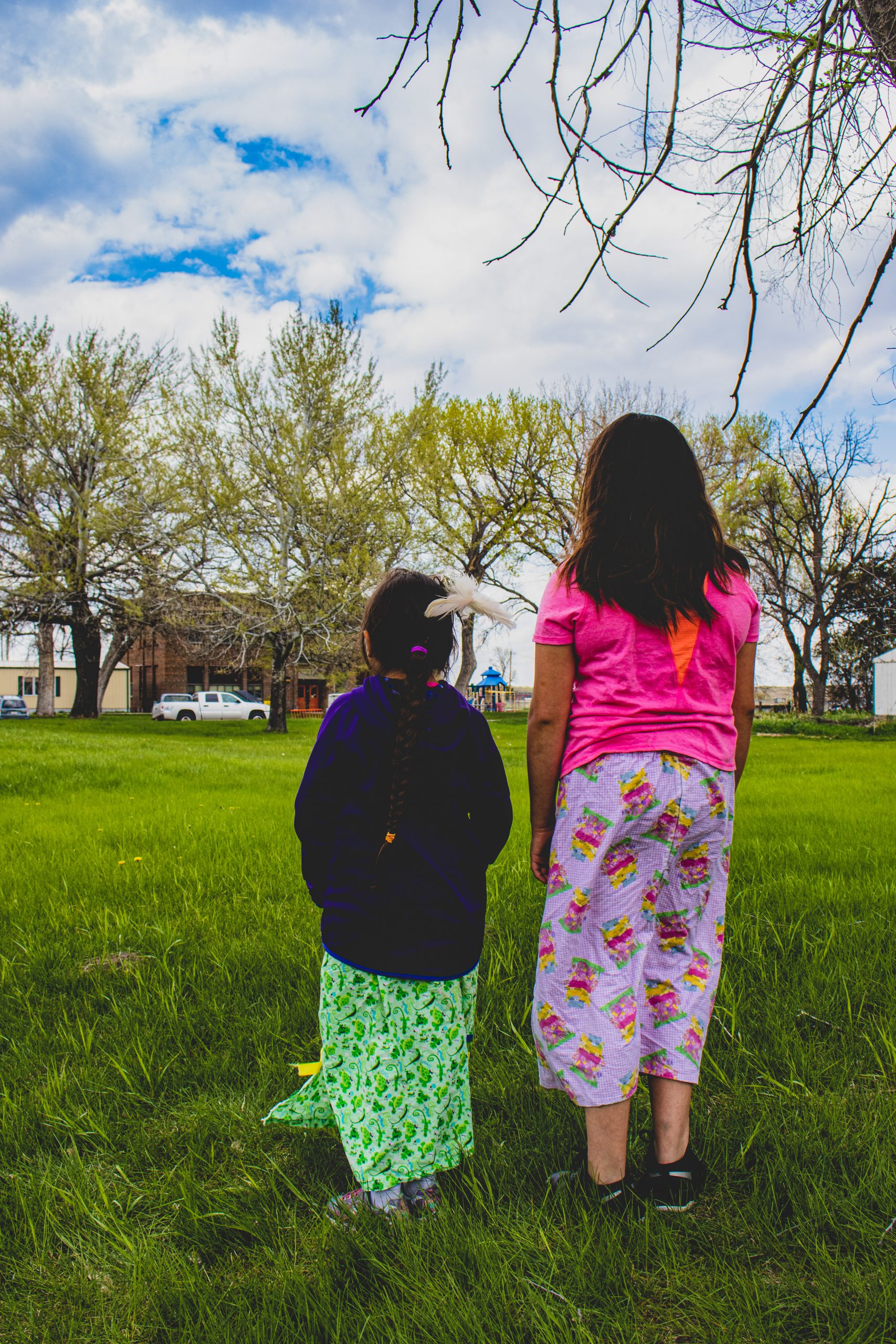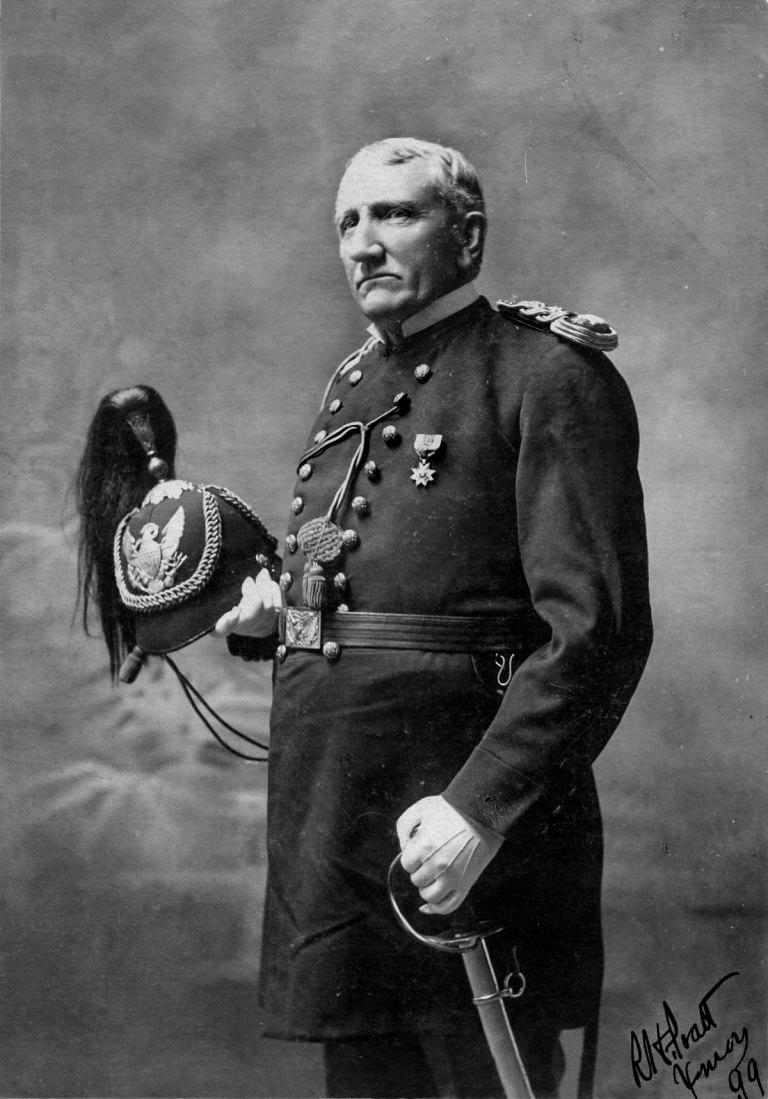Indianz.Com > News > Flatwater Free Press: Lakota family fights school district over hair cutting incidents
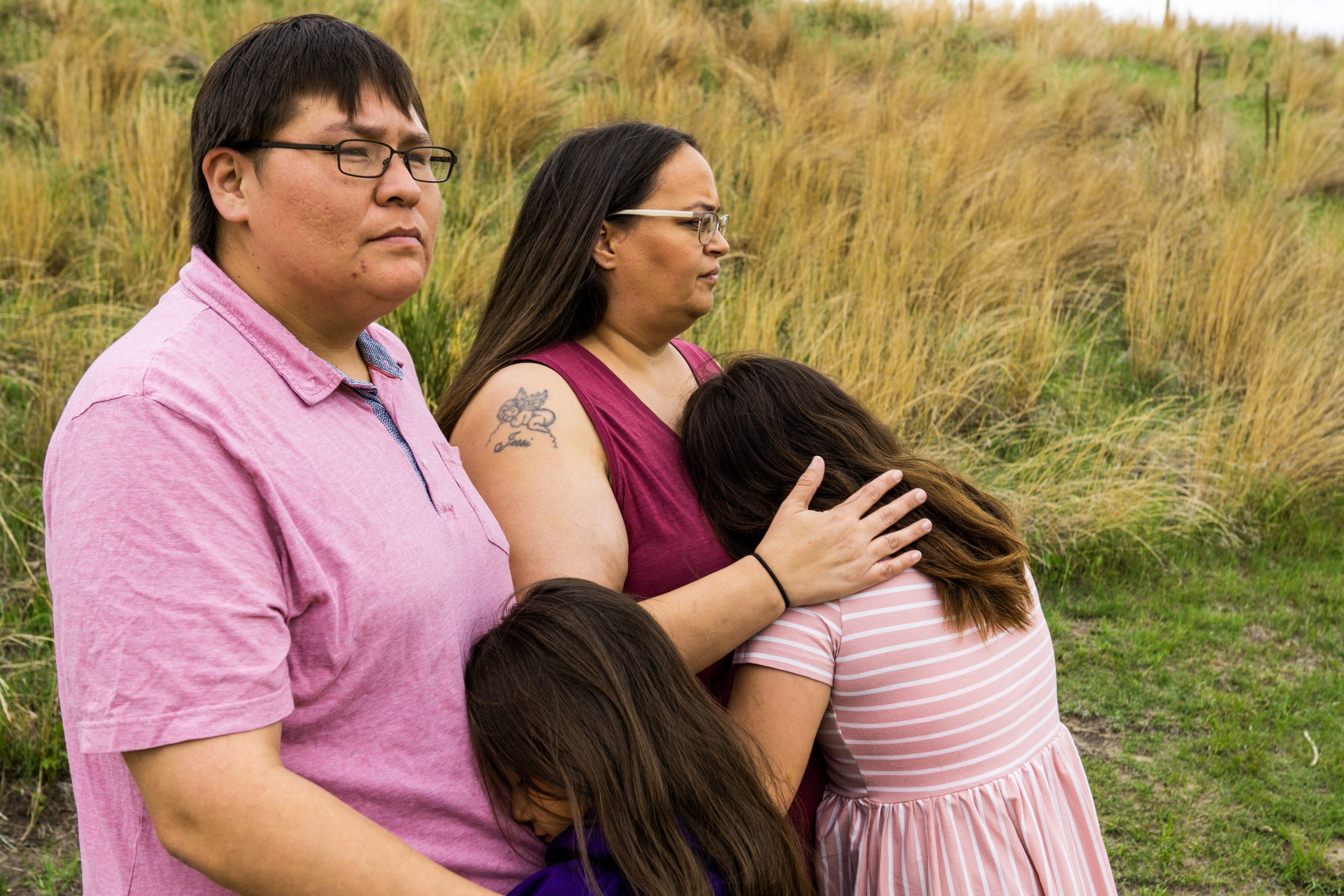
A school sees a lice check. Lakota people sense centuries of repression.
Monday, September 20, 2021
Flatwater Free Press
It’s early summer and a Lakota woman stares into the trees, deep past the leaves and their shadows, her dark eyes misting up. Not far away, her daughters run through the park, a creek-fed oasis in the middle of the arid, amber Sandhills of Nebraska.
Norma LeRoy tries to understand why a school secretary cut her two little girls’ hair without her consent in the spring of 2020. And then, days later, did it again. The secretary was checking for lice, LeRoy was told — lice the mother said they never found.
It’s a new semester now, and her daughters are pinballing through the park. But LeRoy still feels the weight of those snips of hair, feels like few in this remote region of Cherry County understand what they took from her family. It’s why the 36-year-old Rosebud Sioux has to turn away from her kids, toward the trees, to shield them from her tears.
To her people, hair is sacred. Cutting it outside Lakota tradition carries consequences.
“Happiness, the goodness, the wellness of life, that takes all that away,” LeRoy said. “And so that’s the reason why we, as Native Americans, look at our hair strongly. Because it comes from the spirit world, and it was given to us.”
In Kilgore, population 79, less than four miles from South Dakota’s Rosebud reservation, hair cutting dredges up dark, generations-long history. Stories of boarding schools where they sheared the jet black hair of Native Americans to make them look more like white people. Like those boarding school kids, LeRoy and her wife Alice Johnson say their little girls — ages 12 and 7 — also lost something. They don’t laugh the same way. They don’t play like they used to. And immediately before and after the hair cutting, three of their grandmothers died.
Wàkuza.
It invited bad luck, LeRoy said.
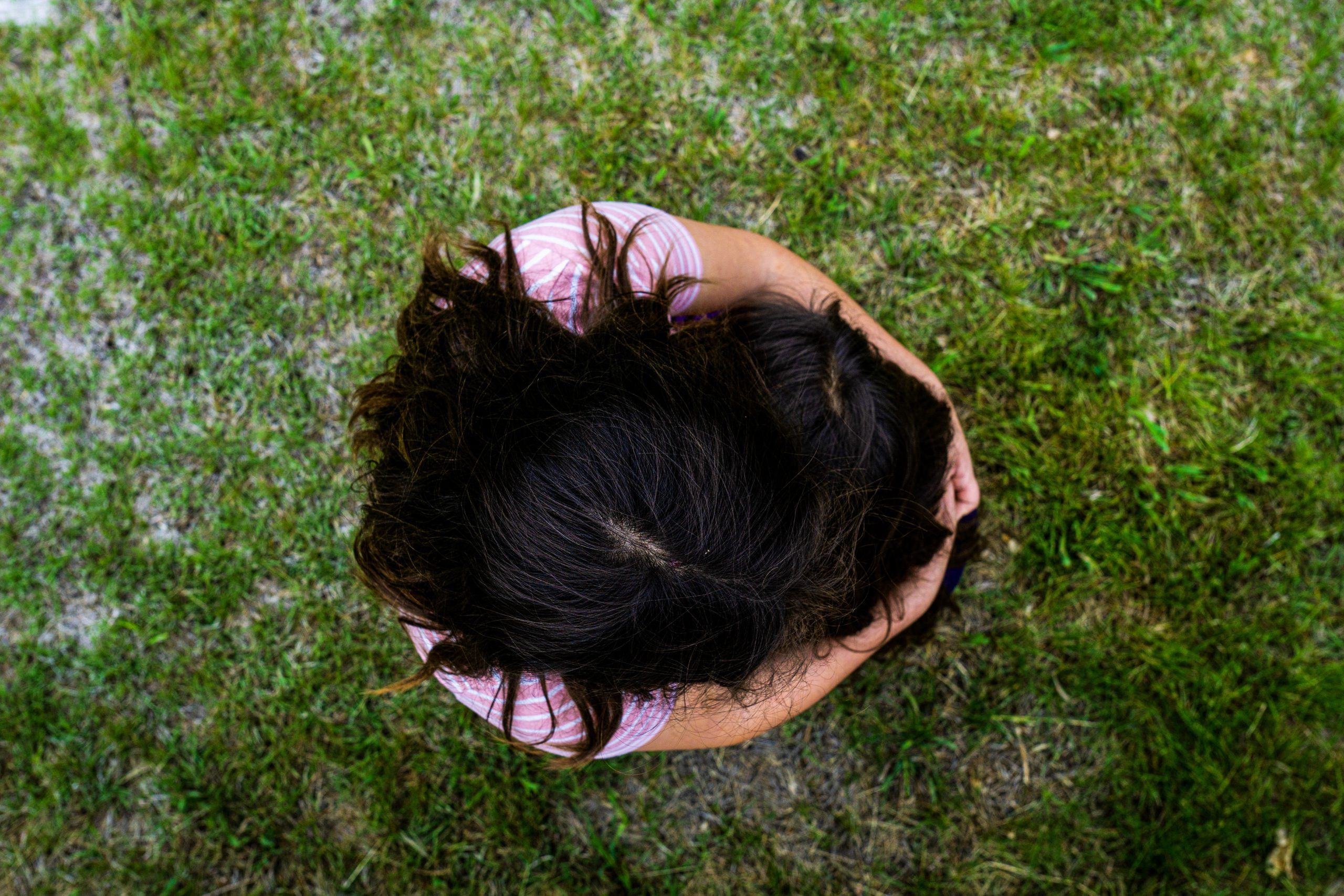
Complaint: Johnson v. Cody-Kilgore Unified School District [PDF]
alicejohnsonnormaleroyvcodykilgore
On May 17, the two mothers filed a lawsuit in federal court in Lincoln against the Cody-Kilgore Unified Schools district. The mothers allege their first amendment rights were violated.
“It’s definitely resonating with parents,” said Rose Godinez, their attorney with the ACLU of Nebraska. “When you send a child to school, you expect them to come back to you safe, not violated, and that’s not what happened here.”
Calls, emails, text messages and Facebook messages sent to the secretary, school superintendent, former superintendent and all six school board members went either unanswered or the person declined to comment. The school’s lawyer, Chuck Wilbrand of Knudsen Law Firm in Lincoln, also declined to comment.
On July 15, the school and its attorney filed a motion to dismiss the case. School officials were unaware hair cutting was culturally insensitive, the motion reads, and the school’s former superintendent agreed not to cut the children’s hair in the future a little over a week after the parents discovered the first cutting.
But that did little to appease LeRoy and Johnson, who feel the school violated their family’s culture in the same manner that Native culture has long been violated.
“I just want people to understand that you cannot touch another person’s child,” Johnson said. “Every religion has beliefs. Every culture has beliefs that we have rules that we live by. And I want people to know that.”
Star Women
To understand the importance of hair to the Lakota, you need to know about the star woman.
Long ago, the story goes, a woman sat in the Big Dipper. Lonely, she grew her hair long enough to reach Earth. When she got here, she cut it.
“She cut it because she needed to come down here to build a life,” LeRoy said. “And for her to build that life, she used her hair. And so this is why we say that there are strict restrictions on women with long hair. Because their spirit lives within their hair. And once you cut that, part of their spirit’s gone.”
LeRoy grew up on these stories. She learned the Lakota language, ceremonies and traditions from her grandmother on the Rosebud reservation, where she has lived most her life. Johnson, 42, has family who live on the reservation, but grew up in Kilgore with a Native mother and white stepfather.
The two Lakota women met on Facebook in 2015 and married a year later. Each had daughters from previous marriages and after marrying had one more. They are raising their four children with Lakota traditions.
But they are also raising them in a small, mostly white, Nebraska town — which wasn’t a problem until March 2, 2020.
“I was like, ‘Wait, who cut your hair?’” Johnson said when her 10-year-old daughter told her about the incident. “And then I broke down. I broke down crying and I was like, ‘How could she take that from us?’”
The girls told their mother the school secretary did it. When they called the superintendent, he said it was a head lice check. The school’s student handbook doesn’t outline how lice checks are performed.
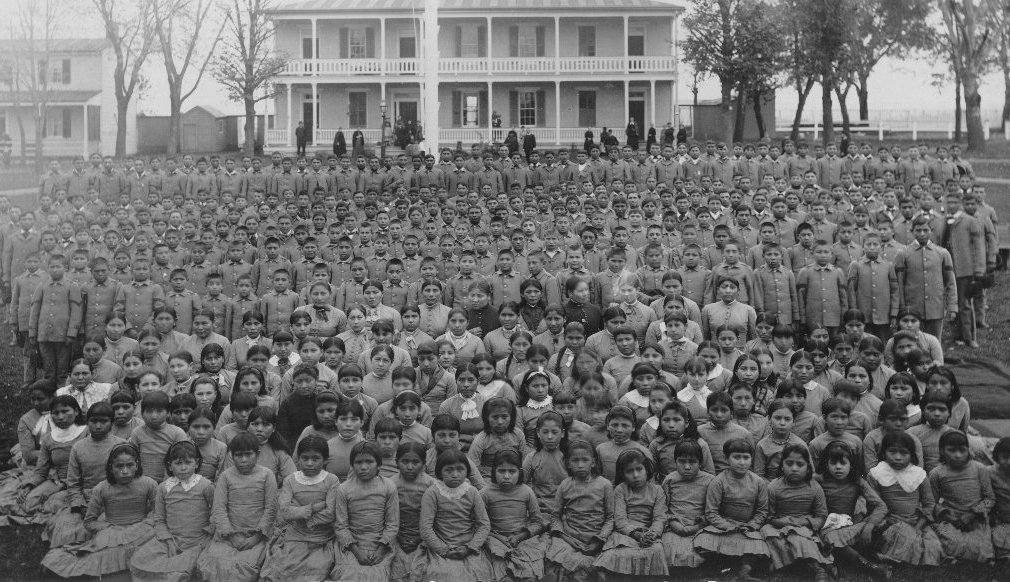
“Kill The Indian, Save The Man”
As the story circulated on social media, raw emotions surfaced. Grandparents shared stories of how their hair had been cut in boarding schools decades ago.
“Having the seventh, eighth, tenth generation having to go through it again…I mean, it’s just a big eye opener because it’s being re-lived,” LeRoy said.
On March 3, 1819, nearly 201 years to the day before the children’s hair was cut, the United States signed the Civilization Fund Act. That ushered in an era from 1860 to 1978 when boarding schools nationwide, including in Nebraska, separated Native children from their families, punished them for speaking their language, and often cut their long hair.
“…All the Indian there is in the race should be dead. Kill the Indian in him, and save the man,” Capt. Richard H. Pratt, who founded the Carlisle Indian Industrial School, famously said in 1892.
In 1884, Christian missionaries came to South Dakota’s Yankton Reservation and took eight-year-old Zitkála-Šá from her mother.
“I remember being dragged out, though I resisted by kicking and scratching wildly,” Zitkála-Šá wrote in 1900 of her hair cutting. “In spite of myself, I was carried downstairs and tied fast in a chair. I cried aloud, shaking my head all the while until I felt the cold blades of the scissors against my neck, and heard them gnaw off one of my thick braids. Then I lost my spirit…now I was only one of many little animals driven by a herder.”
On March 9 this year, Johnson, LeRoy and a procession of grandmothers drove to the Cody-Kilgore Unified Schools Board of Education meeting to tell these stories. Board members listened as the women read a letter, spoke, and asked for cultural sensitivity training, say the mothers. When they finished, Adam Naslund, school board president, thanked them for sharing, according to meeting minutes.
The mothers and the ACLU said the school has since declined to implement cultural sensitivity training. In its motion to dismiss, the school district says it never discriminated, took quick action to prevent future hair cuttings, and argued no further training is needed.
As for the fact it brings up memories of boarding schools, the motion reads “this could not be further from the truth.”
But Sandy White Hawk, an educator and advocate, says these events have a lot more to do with both past and present — touching on themes of assimilation and forced separation from Native culture — than school officials may want to admit.
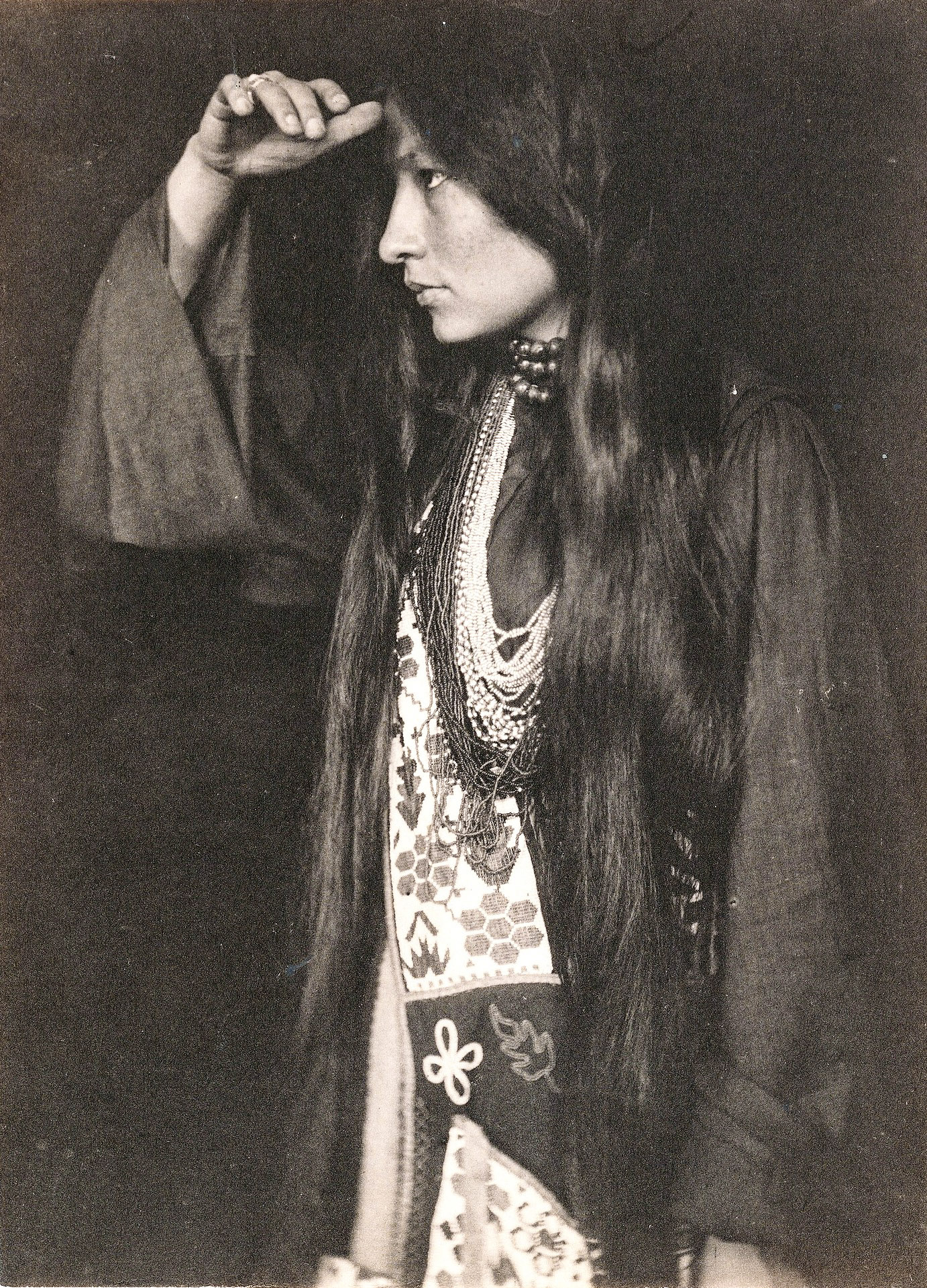
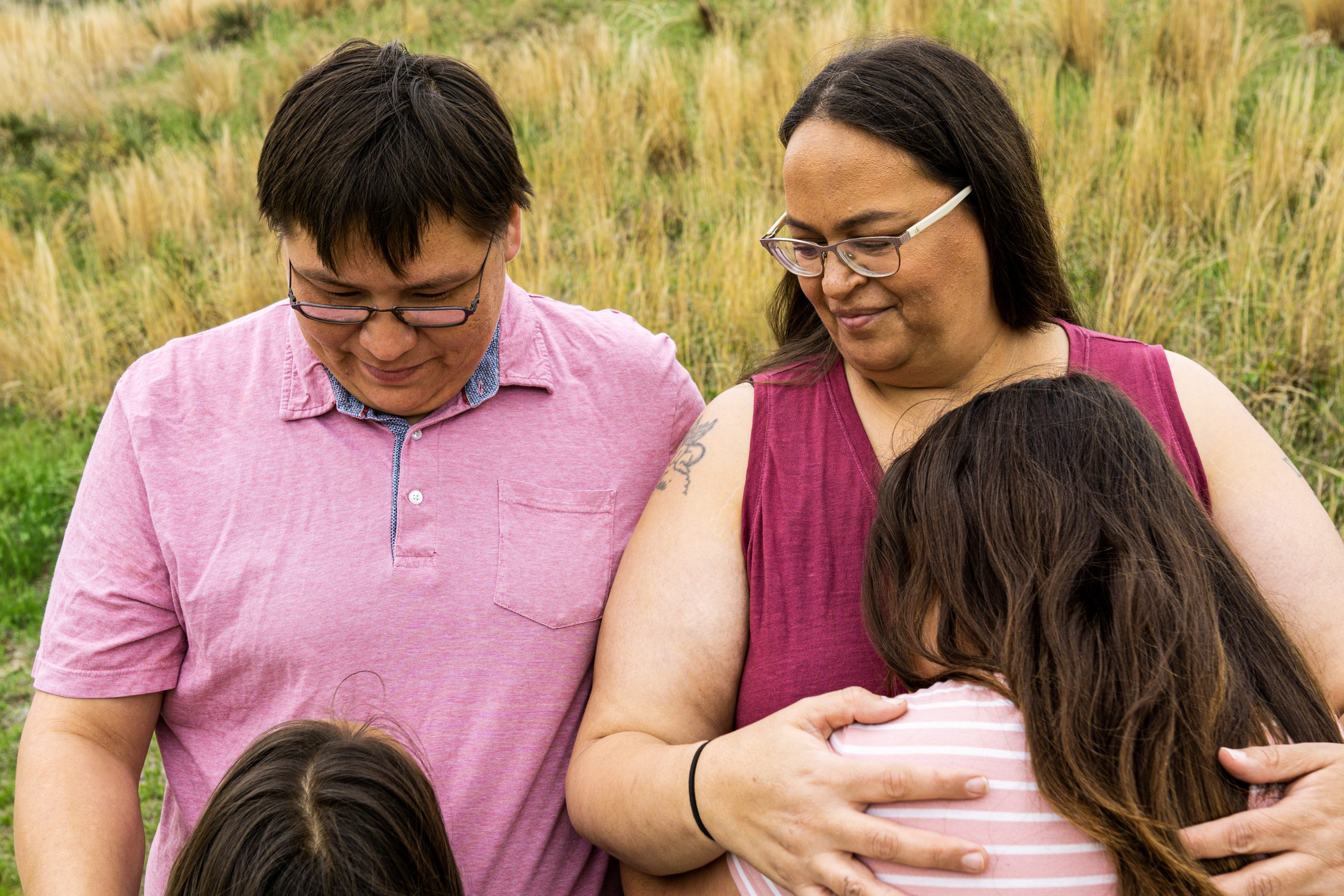
‘We’re Voices’
The early-summer wind blows across the scruffy Sandhills as the two mothers and their daughters climb through the brush. It’s overcast in early May and the family has a clear view over the bluffs carved by the Niobrara River. Long ago this fertile valley attracted more than 20 Native tribes who fished and hunted along its banks. In its canyons they found solitude, contemplation and in the river itself, a sacred meaning.
Times have changed. LeRoy and Johnson pull up in a packed van, their 11-year-old daughter in the back scrolling through her TikTok account, which has thousands of followers.
As they squeeze together for a family photo, the magnitude of the moment isn’t lost on the parents. They think this is their chance to do something about the horrors inflicted on their people generations ago. They know they can’t heal what’s been broken, but they also know they can’t sit silently.
“We’re speaking up about it, and we’re making people aware this is still happening to this date,” Johnson said. “We’re voices, not only for our girls, but for a lot of people.”
Chris Bowling is the editor of the Omaha Reader. A native of Cincinnati, Bowling graduated from the University of Nebraska-Lincoln in 2018. While at UNL, Bowling was a reporter on “The Wounds of Whiteclay.” The student group project won the Robert F. Kennedy Human Rights Journalism Grand Prize — the first time student journalists had won that award.
The Flatwater Free Press is Nebraska’s first independent, nonprofit newsroom focused on investigations and feature stories that matter. This story is published here under a Creative Commons license (CC BY-NC-ND 4.0).
Search
Filed Under
Tags
More Headlines
Native America Calling: A sample of Native Guitars Tour 2024
Native America Calling: How Native literature is changing the mainstream narrative
Native America Calling: No ordinary animal
Native America Calling: Safeguards on Artificial Intelligence
NAFOA: 5 Things You Need to Know this Week
Chuck Hoskin: Cherokee Nation takes the lead for our environment
Native America Calling: Earth Day assessment for Native peoples
Cronkite News: Gathering addresses ‘epidemic’ among Native people
VIDEO: Cody Desautel on tribes and federal forest management
AUDIO: Legislative Hearing on Discussion Draft of Forest Management Bill
Native America Calling: Remembering the 1974 Navajo border town murders
Native America Calling: Can the right approach close the Native immunization gap?
Cronkite News: Long COVID cases remain high in Arizona
Native America Calling: Eyes in the sky for development, public safety, and recreation
Native America Calling: Three new films offer diverse views of Native life
More Headlines
Native America Calling: How Native literature is changing the mainstream narrative
Native America Calling: No ordinary animal
Native America Calling: Safeguards on Artificial Intelligence
NAFOA: 5 Things You Need to Know this Week
Chuck Hoskin: Cherokee Nation takes the lead for our environment
Native America Calling: Earth Day assessment for Native peoples
Cronkite News: Gathering addresses ‘epidemic’ among Native people
VIDEO: Cody Desautel on tribes and federal forest management
AUDIO: Legislative Hearing on Discussion Draft of Forest Management Bill
Native America Calling: Remembering the 1974 Navajo border town murders
Native America Calling: Can the right approach close the Native immunization gap?
Cronkite News: Long COVID cases remain high in Arizona
Native America Calling: Eyes in the sky for development, public safety, and recreation
Native America Calling: Three new films offer diverse views of Native life
More Headlines
